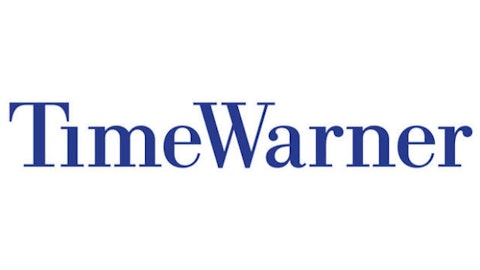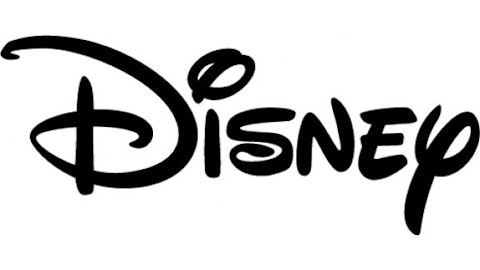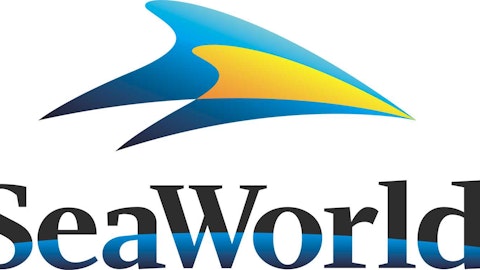Much like their roller coasters’ harrowing first drops, the theme park operators’ stock prices dropped sharply during the financial crisis, as high debt loads and falling attendance proved to be a bad combination.Six Flags Entertainment Corp (NYSE:SIX) made its way to bankruptcy court in 2009, while the other major operators like Cedar Fair, L.P. (NYSE:FUN) and SeaWorld Entertainment Inc (NYSE:SEAS) scaled back their capital expansion plans. However, the economic recovery has brought the masses back to the parks looking for a little entertainment. With good dividends and high barriers to entry, is the sector a good place for investors?
In a word…yes
Theme parks have proven to be universally popular, crossing both generations and geographical boundaries. The parks segment has long been a core business unit for Disney, accounting for roughly 30% of sales, ever since it opened Disneyland in the 1950’s. The company has successfully used its parks to create opportunities for its media properties, ultimately creating lifelong customers and shareholder value.
Finding a sales pitch
Of course, not everyone has Disney’s lovable cast of characters, so other operators need a unique hook for customers. Usually, the parks’ main draw is having the tallest and fastest roller coasters in the world. While Cedar Fair, L.P. (NYSE:FUN)’s Cedar Point property can’t claim the tallest coaster anymore, it is generally regarded as the best theme park, complete with fifteen coasters, four hotels, water parks, and a marina. The company has eleven theme parks that dot major metro areas in the U.S. and Canada, but its main value comes from its namesake property.
In its latest fiscal year, Cedar Fair, L.P. (NYSE:FUN) reported its third straight year of growth, with increases in revenues and adjusted operating income of 3.9% and 4.4%, respectively, versus the prior year. While overall attendance was flat, due in part to poor weather, the company enjoyed gains in its customers’ average spending within its parks and at its hotels. In addition, Cedar Fair, L.P. (NYSE:FUN)’s strong cash flow allowed it to continue investing in new attractions for its habitually thrill seeking customers.
Meanwhile, Six Flags Entertainment Corp (NYSE:SIX) emerged from bankruptcy in 2010 with a nationwide park portfolio and a nimble capital structure, thanks to a $1.5 billion debt restructuring. While the company doesn’t have a trophy property like Cedar Point, it has a diverse group of eighteen properties in major metropolitan markets, making it the largest theme park operator in the world. Six Flags can also lay marketing claim to the world’s tallest roller coaster, its Kingda Ka ride at Six Flags Great Adventure.
Like Cedar Fair, L.P. (NYSE:FUN), Six Flags Entertainment Corp (NYSE:SIX) has also reported three straight years of growth, with increases in revenues and adjusted operating income of 5.6% and 9.2%, respectively, in its latest fiscal year.Six Flags Entertainment Corp (NYSE:SIX) doesn’t have the hotel portfolio that provided a boost to Cedar Fair’s top line, but it enjoyed a stronger gain in overall park attendance, up 5% during the period. The company is also focused on increasing its sales of season passes, which provides a more predictable revenue and cash flow stream to invest in new attractions.
Forget the coasters, get back to nature
In contrast, SeaWorld Entertainment Inc (NYSE:SEAS) has roller coasters for thrill seekers, but it tries to sell customers on nature with its marine-themed parks that have 67,000 marine and terrestrial animals, one of the largest collections in the world. Obviously, nature is popular too, as the company’s properties admitted roughly 24 million customers in 2012, in line with overall attendance at Six Flags Entertainment Corp (NYSE:SIX) and Cedar Fair, L.P. (NYSE:FUN). Like its competitors, SeaWorld Entertainment Inc (NYSE:SEAS) has gained from higher attendance levels and its customers’ willingness to spend more during their time in the parks. However, SeaWorld Entertainment Inc (NYSE:SEAS) suffers from fairly weak operating and cash flow metrics, due to the high expenses of maintaining their animal-focused parks, making this recent IPO a work in process.
The bottom line
With economic growth and consumers’ disposable income on the rise, the theme park operators should continue to gain from customers that are looking for diversity in their entertainment options. While the parks spend roughly 9% of their revenues on annual capital investments, they have shown an ability to eventually recover their costs through price increases. Investors should take a wait-and-see approach on SeaWorld Entertainment Inc (NYSE:SEAS), but they should find the solid dividends and long operating histories at Cedar Fair, L.P. (NYSE:FUN) and Six Flags Entertainment Corp (NYSE:SIX) to be much to their liking.
The article Should You Take a Ride With These Theme Parks? originally appeared on Fool.com and is written by Robert Hanley.
Robert Hanley has no position in any stocks mentioned. The Motley Fool has no position in any of the stocks mentioned. Robert is a member of The Motley Fool Blog Network — entries represent the personal opinion of the blogger and are not formally edited.
Copyright © 1995 – 2013 The Motley Fool, LLC. All rights reserved. The Motley Fool has a disclosure policy.





